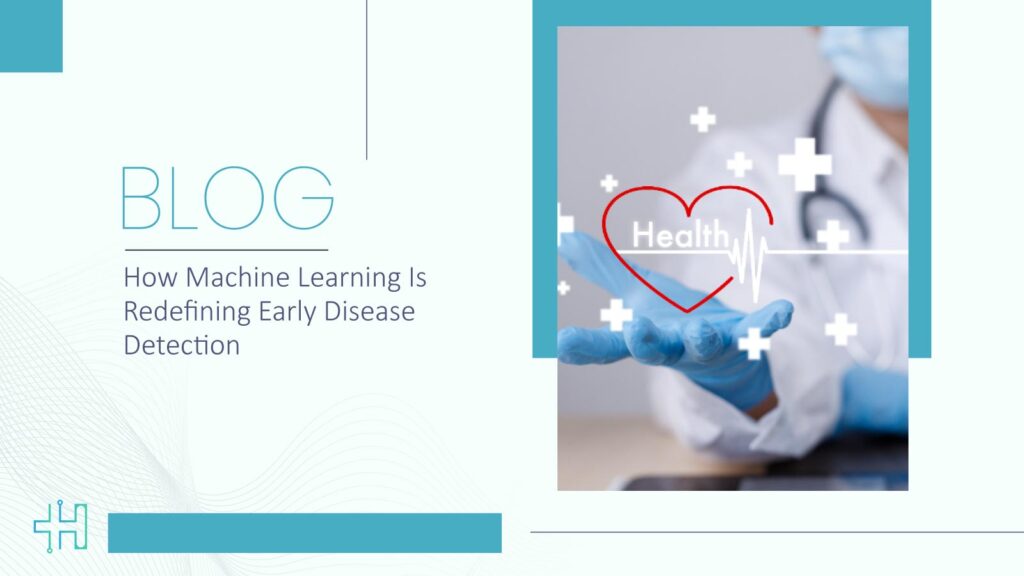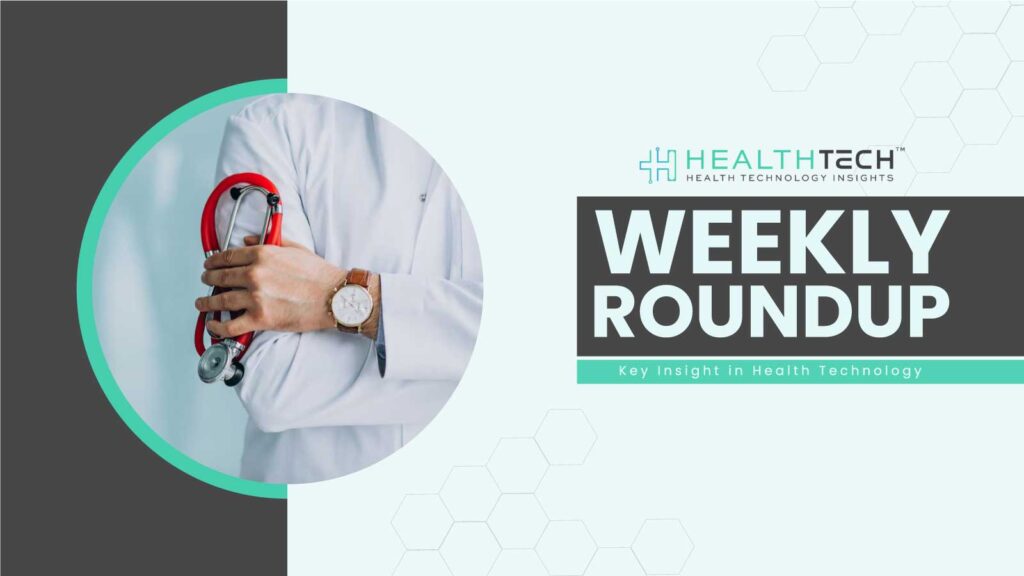Early detection of disease has long been the cornerstone of improved patient outcomes and life-saving. Traditionally, early detection relied on screening tests, physical examination, and patient history, but these tools have some limits in terms of accuracy, availability, and speed. Machine learning (ML), a type of artificial intelligence (AI), employs advanced algorithms and massive datasets to identify patterns and forecast outcomes.
In the medical field, ML is revolutionizing early disease detection, offering more precise, faster, and scalable solutions. This article will explore how machine learning is revolutionizing early disease detection, its applications, benefits, case studies, and the challenges it faces in mainstream healthcare.
The Significance of Early Disease Detection
Early detection improves prognosis for many illnesses, including cancer, diabetes, and cardiovascular diseases. The American Cancer Society reports that a 5-year survival rate of 99% can be achieved for breast cancer if detected early enough, compared to only 27% when diagnosed late. Taking early action similarly improves survival rates and reduces treatment costs for many other diseases.
Nonetheless, the early detection process has never been without challenges. Conventional testing, including imaging, biopsy, and blood tests, usually relies on the training and experience of healthcare providers. Despite improvements, these techniques can still miss early signs or delay results, postponing treatment. Additionally, timely screening access is not always possible, particularly in rural and underserved regions.
Machine learning overcomes these obstacles by providing quicker, more precise diagnoses and tailored recommendations for treatment from patient-specific information. It analyzes vast data to find complex patterns beyond human recognition, aiding early disease detection.
Machine Learning in Healthcare
Machine learning is a type of AI that learns from experience, identifies patterns, and predicts outcomes without explicit programming. It works by training algorithms on large data sets, allowing them to improve as they process more information over time. Machine learning in healthcare processes medical images, predicts disease risks, evaluates treatments, and streamlines administration.
Machine learning’s ability to rapidly analyze vast data sets makes it especially powerful for early disease detection. Medical imaging data, genomic sequences, electronic health records (EHRs), and even real-time information from wearable devices, for example, can be combined and analyzed by machine learning algorithms. These algorithms learn from patterns in the data and identify faint signals that might signal the development of a disease.
Machine learning’s ability makes it the best solution for the early detection of diseases. Unlike conventional techniques that rely on human input, machine learning systems function in real-time, rapidly handle large data, and provide insights for faster diagnoses and better outcomes.
Analyzing Medical Images
Machine learning, especially deep learning, has advanced significantly in analyzing medical images such as X-rays, CT scans, MRIs, and mammograms. Deep learning algorithms are designed to simulate how the human brain works when analyzing images, which enables these models to identify patterns in medical images better than the traditional approach.
Google Health has created an AI model that can beat human radiologists in identifying breast cancer from mammograms. In clinical trials, the model showed a lower false-positive and false-negative rate than human radiologists, resulting in more accurate early cancer detection and fewer unnecessary procedures.
Predictive Modeling
Machine learning can predict disease risk by analyzing health data, including demographics, lifestyle, medical history, and genetics. These models can determine individuals who are at greater risk of having diseases such as cardiovascular diseases, diabetes, and even some types of cancers.
By recognizing individuals at risk early, healthcare professionals can implement preventive interventions to decrease the chances of disease progression. For example, ML algorithms analyze cholesterol, blood pressure, and family history to assess heart disease risk. This predictive capability enables healthcare professionals to intervene proactively and create customized treatment or preventive strategies.
Genomic Data Analysis
Machine learning is now utilized to process genomic data and pinpoint genetic markers that are linked with diseases. Genomic data analysis predicts an individual’s likelihood of developing conditions such as inherited cancers, autoimmune diseases, and neurodegenerative disorders. Machine learning models can process intricate patterns within genomic sequences to identify mutations or irregularities that predispose one to increased disease risk.
Scientists have created ML models that interpret genomic information to determine who is at risk for certain cancers, like ovarian or colorectal cancer. Early detection allows for frequent screening or preventive action, helping reduce cancer risk in vulnerable individuals.
Real-Time Monitoring
Wearable technology, including smartwatches, fitness trackers, and other health monitoring devices, offers real-time information on a patient’s condition. Machine learning algorithms interpret this data to identify early disease indicators or monitor the progression of ongoing conditions. These devices monitor vital signs such as heart rate, blood pressure, and sleep patterns, and ML models can identify anomalies that signal the onset of conditions like arrhythmia, sleep apnea, or diabetes.
Apple and Fitbit use machine learning on wearable data to detect abnormal heart rhythms, indicating potential heart disease. By alerting users to irregular heart rhythms, they can see doctors sooner, potentially preventing serious incidents.
Voice and Speech Recognition
Machine learning analyzes voice patterns to help diagnose neurological disorders like Parkinson’s and Alzheimer’s early. Small changes in speech, like slurring or tone shifts, can signal early signs of these diseases.
Researchers have created ML models that can interpret voice recordings to identify neurological disease signs. Voice analysis, for example, can identify Parkinson’s onset by recognizing speech and vocal tone changes. Early detection can translate to significant differences in treatment outcomes and better control of the condition.
A New Era in Healthcare
Machine learning is a paradigm change in medicine. By giving us the power to diagnose diseases at an earlier age, more reliably, and less expensively, ML is not only saving lives, it’s giving patients the possibility of living longer, healthier lives.
By integrating information, innovation, and human ingenuity, we can detect even the slightest disease signs early, enabling timely intervention.
Looking ahead, ongoing machine learning innovation promises a healthcare revolution focused on prevention and personalized care. This revolution aims to enhance lives, improve outcomes, and empower individuals to take control of their health.
FAQs
1. What makes machine learning useful in spotting diseases before symptoms show up?
Machine learning works by learning from massive amounts of health data. It can detect hidden patterns that doctors might miss, helping flag potential health issues even before clear symptoms appear.
2. Can AI tools spot cancer or heart problems earlier than humans?
Yes, AI-powered models have been trained to recognize subtle warning signs in medical images and test results. In many cases, they’ve been shown to detect issues like tumors or irregular heart rhythms faster and more accurately than traditional methods.
3. How do smartwatches and fitness trackers fit into early disease detection?
Wearables collect ongoing health stats like heart rate or sleep patterns. Machine learning algorithms analyze this live data to catch unusual trends, offering early alerts for conditions like heart arrhythmia or diabetes risk.
4. Is voice analysis through AI helping diagnose brain-related illnesses?
It is. Changes in how a person talks, like slight slurring or pauses, can be early signs of conditions like Alzheimer’s or Parkinson’s. Machine learning can pick up on these small speech shifts long before other symptoms appear.
5. What does the future look like for machine learning in everyday healthcare?
As AI systems get smarter and more data becomes available, we’ll likely see more personalized health predictions, faster diagnoses, and prevention-based care that begins long before a person feels sick.
To participate in our interviews, please write to our HealthTech Media Room at sudipto@intentamplify.com




